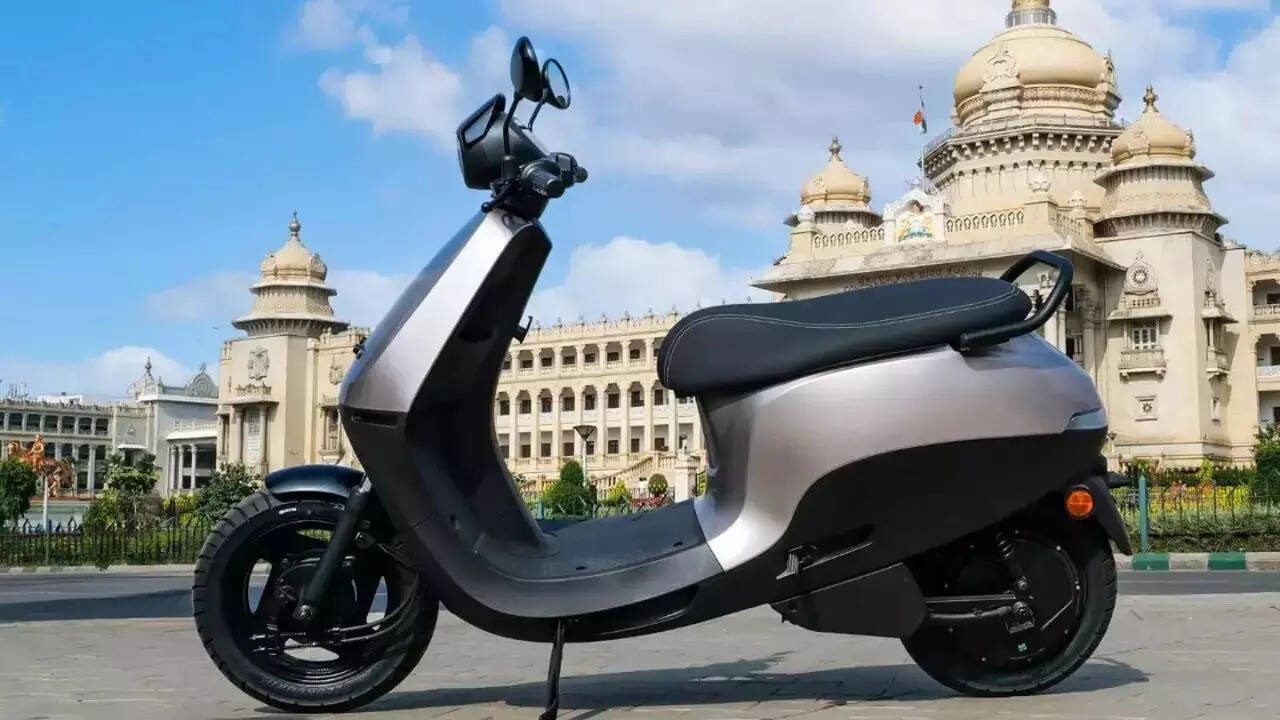Ola Electric experienced a significant revenue drop of 49.6% year-over-year, with revenue falling to Rs 828 crore in the June quarter from Rs 1,644 crore in the previous year. Despite this decline, the company saw a positive trend with a nearly 36% increase in revenue on a sequential basis, indicating potential growth momentum.
The Curious Case of Ola Electric’s Q1 Dip: Is This Just a Speed Bump?
Ola Electric, once the undisputed champion of India’s burgeoning electric scooter market, has hit a snag. Recent reports reveal a surprising 50% drop in revenue for the first quarter of fiscal year 2025. This news has certainly raised eyebrows, prompting questions about the long-term trajectory of the company and the broader EV landscape in India. But is this a sign of trouble ahead, or simply a temporary slowdown in a rapidly evolving market?
For months, Ola Electric seemed unstoppable. Their sleek scooters zipped through city streets, their marketing blitz was unavoidable, and their production numbers soared. The company effectively captured the imagination of a nation eager to embrace sustainable transportation. So, what explains this sudden deceleration?
Decoding the Downturn: What’s Behind Ola Electric’s Revenue Dip?
Several factors could be contributing to Ola Electric’s Q1 revenue decline. One potential reason is increased competition. The Indian EV market is no longer a one-horse race. Established players like Ather Energy and TVS Motor Company, along with a host of new entrants, are vying for market share. These competitors are offering a wider range of electric scooters with varying features and price points, giving consumers more choices than ever before.
Another contributing factor might be the reduction in government subsidies. The Indian government has been actively promoting electric vehicle adoption through various incentive programs. However, changes or reductions in these subsidies could impact the affordability of electric scooters, particularly for price-sensitive consumers. The impact of fluctuating subsidy schemes is often felt acutely by both manufacturers and buyers alike.
Furthermore, Ola Electric has faced its fair share of challenges regarding product quality and service. Early adopters reported issues with battery performance, range anxiety, and after-sales service. While the company has been actively addressing these concerns, the negative publicity might have deterred some potential buyers. Building trust is paramount, and overcoming initial hiccups is crucial for long-term success.
Finally, the overall economic climate can’t be ignored. Economic uncertainties and inflationary pressures can impact consumer spending, particularly on discretionary items like electric scooters. Potential buyers might postpone their purchase decisions due to financial constraints.
Beyond the Numbers: What Does This Mean for the Future of Electric Scooters?

Despite the recent setback, the long-term outlook for the electric scooter market in India remains bright. The underlying drivers of EV adoption – growing environmental awareness, rising fuel prices, and government support – are still firmly in place. The dip in Ola Electric’s revenue doesn’t necessarily signal a fundamental shift in consumer demand for electric scooters. Instead, it could be a sign that the market is maturing and becoming more competitive.
The key for Ola Electric, and other EV manufacturers, is to focus on continuous improvement. This includes enhancing product quality, expanding charging infrastructure, improving after-sales service, and offering a wider range of models to cater to diverse customer needs. Innovation in battery technology, motor efficiency, and connectivity features will also be crucial for staying ahead of the curve.
Moreover, companies need to focus on building strong brand loyalty and fostering trust among consumers. Transparent communication, proactive problem-solving, and a customer-centric approach are essential for creating a positive brand image.
Consider reading more about the [latest advancements in electric vehicle battery technology](/electric-vehicle-battery-technology) on our site.
Recharging and Reimagining: The Road Ahead for Ola Electric
Ola Electric has demonstrated its ability to disrupt the Indian automotive market. The company has built a strong brand, established a nationwide sales and service network, and garnered significant investor interest. The current dip in revenue presents an opportunity for Ola Electric to reassess its strategies, address its challenges, and emerge stronger than before. Perhaps this momentary deceleration is precisely what the company needs to refine its approach and solidify its position as a leader in the electric vehicle revolution. The ride might be getting a little bumpy, but the destination – a future powered by electric mobility – remains firmly in sight.
Ultimately, Ola Electric’s future success depends on its ability to adapt to the evolving market dynamics, innovate relentlessly, and deliver a compelling value proposition to consumers.







